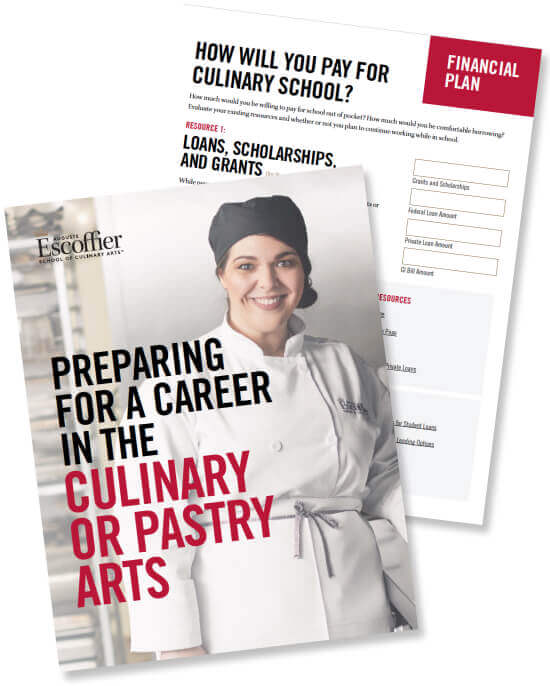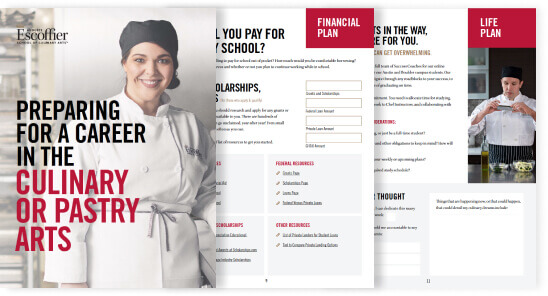You’re sitting down at that new restaurant everyone’s been raving about. The server at last brings out the plate… and you finally get it.
A savory spinach-and-feta crêpe that makes your mouth water just looking at it. A steaming bowl of butternut squash soup with a dollop of sour cream and sprinkle of chives. Sparkling crimson raspberries floating in a fizzy flute of champagne.
Food is not just sustenance, but a rich experience. While taste is important, food that is plated and presented well is more attractive to customers and can set the tone for the entire restaurant.
Presentation and plating can draw attention to the specific ingredients in a dish, whether for aesthetic or practical reasons. For anyone considering a career as a chef, a strong grasp of plating and presentation techniques is vital for continued professional development. These skills help culinary professionals stand out as they train, stage, and begin to work in a variety of environments.
Why Is Food Presentation Important?
Think about a perfectly plated meal you’ve enjoyed that engaged all five of your senses. Maybe it was an expertly crafted uramaki roll with razor thin avocado slices, a dusting of panko, a drizzle of unagi eel sauce, and a ginger-wasabi rose embellishing the plate’s rim. Between the greens and oranges, the spicy and salty, the shapes and textures of the garnishes… you may have decided to make the restaurant your go-to sushi joint.
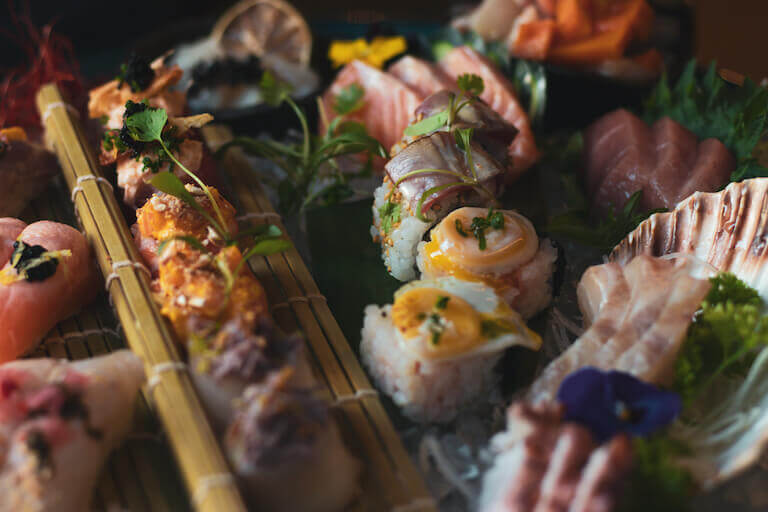
An experience like that sticks with a customer for much longer than a meal that involves mediocre presentation, and creating that kind of memory is exactly what chefs are looking for. Well-executed food presentation can create a sense of professionalism in the mind of eaters and offers an exciting element of a meal that many can’t recreate with the same skill in their own cooking efforts.
In the digital age, strong presentation can also make dishes more apt to be photographed and shared via social media. While there are definitely pros and cons around the prevalence of pre-meal photos shared on sites like Instagram, it can be an effective way to generate attention and sales for many restaurants.
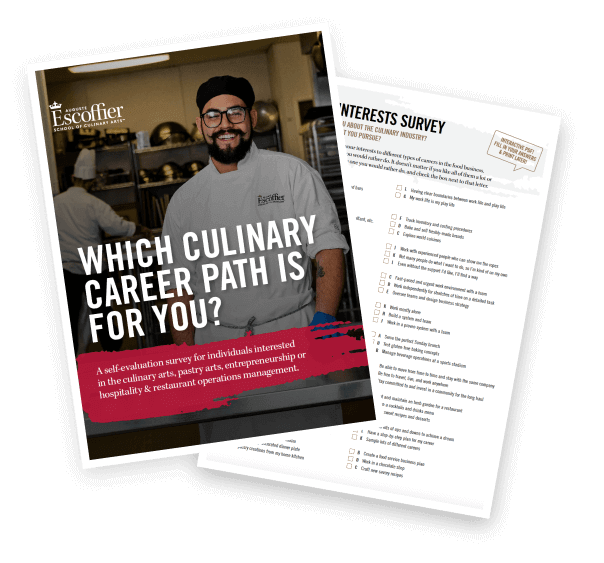
Take the Culinary Career Survey
We’ve compiled a checklist of all of the essential questions into one handy tool: career options, culinary interest surveys, educational opportunities, and more.
Food Plating Techniques
Important considerations to make regarding the element of appearance include the color, size, and pattern or texture of the plate.
It may be especially helpful to look at the plating and presentation process as generally following a series of steps. This starts with choosing a plate, then deciding how the main dish and core sides are arranged or layered. From there, it’s common to move onto sauces to create visual contrast and shapes that aren’t easily rendered with more solid food. Finally, the garnish provides a finishing touch.
Color
Bright colors work well against a dark background, while more neutral or subdued colors can use a white background to create some visual excitement. Besides the colors of the foods, different techniques for adding color might include the use of sauces, spices, and garnishes like fruits or flowers.
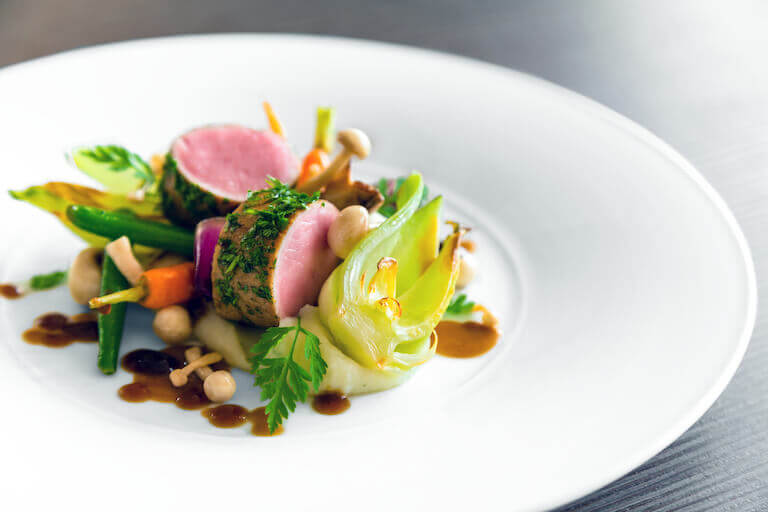
Size
Thinking about the ratio of food to plate is another technique that involves some artistry. Serving a smaller portion of food on a large plate for more white space, or serving dishes in miniature receptacles can be interesting ways to present food masterfully.
Of course, you have to balance practical and artistic considerations – food should never be difficult to eat nor excessively messy because of the vessel it’s served on or in.
Texture
Beyond plates and bowls, the arrangement of foods is key. There should be a star item, one that takes top billing and is also likely the largest portion on the plate. This approach avoids visual competition and instead allows the sides to support the main dish.
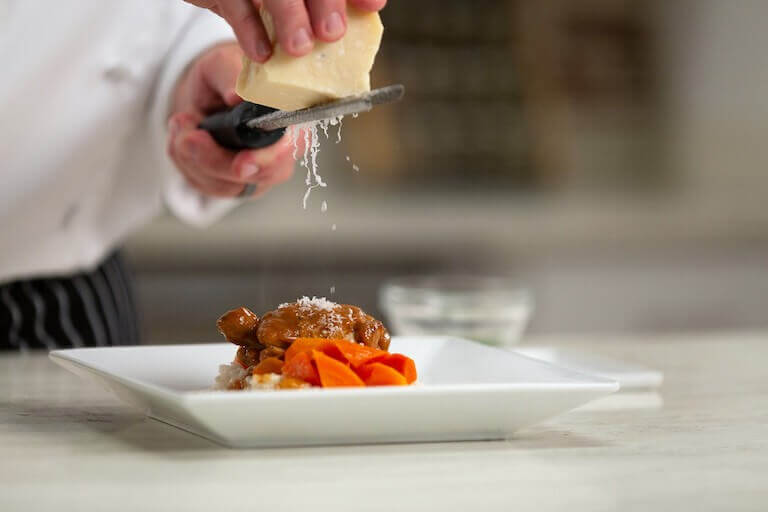
It’s also important to think in three dimensions, as the height of food on a plate can also entice diners. Stacking items for a layered look can be visually appealing and make the meal appear more substantial than it would scattered across the plate.
Skills Involved in the Plating Process
How can you make sure you plate effectively and provide the best possible presentation to customers? There are many different considerations, from how to incorporate sauces and garnishes to the knife skills needed for flourishes like a vegetable rosette, and the plate you use is undeniably foundational.
While earning a culinary arts degree or diploma from Escoffier, students can explore techniques and hone skills to help them with plating during their careers. Check out Escoffier’s culinary arts programs or talk to an Admissions Representative to explore your options.
Here are some other articles you might like:
- How Restaurants Get Michelin Stars: A Brief History of the Michelin Guide
- Gen-Z Food Habits & Influences
- The Latest in Food Tech
This article was originally published on February 20, 2019, and has since been updated.
*Information may not reflect every student’s experience. Results and outcomes may be based on several factors, such as geographical region or previous experience.


